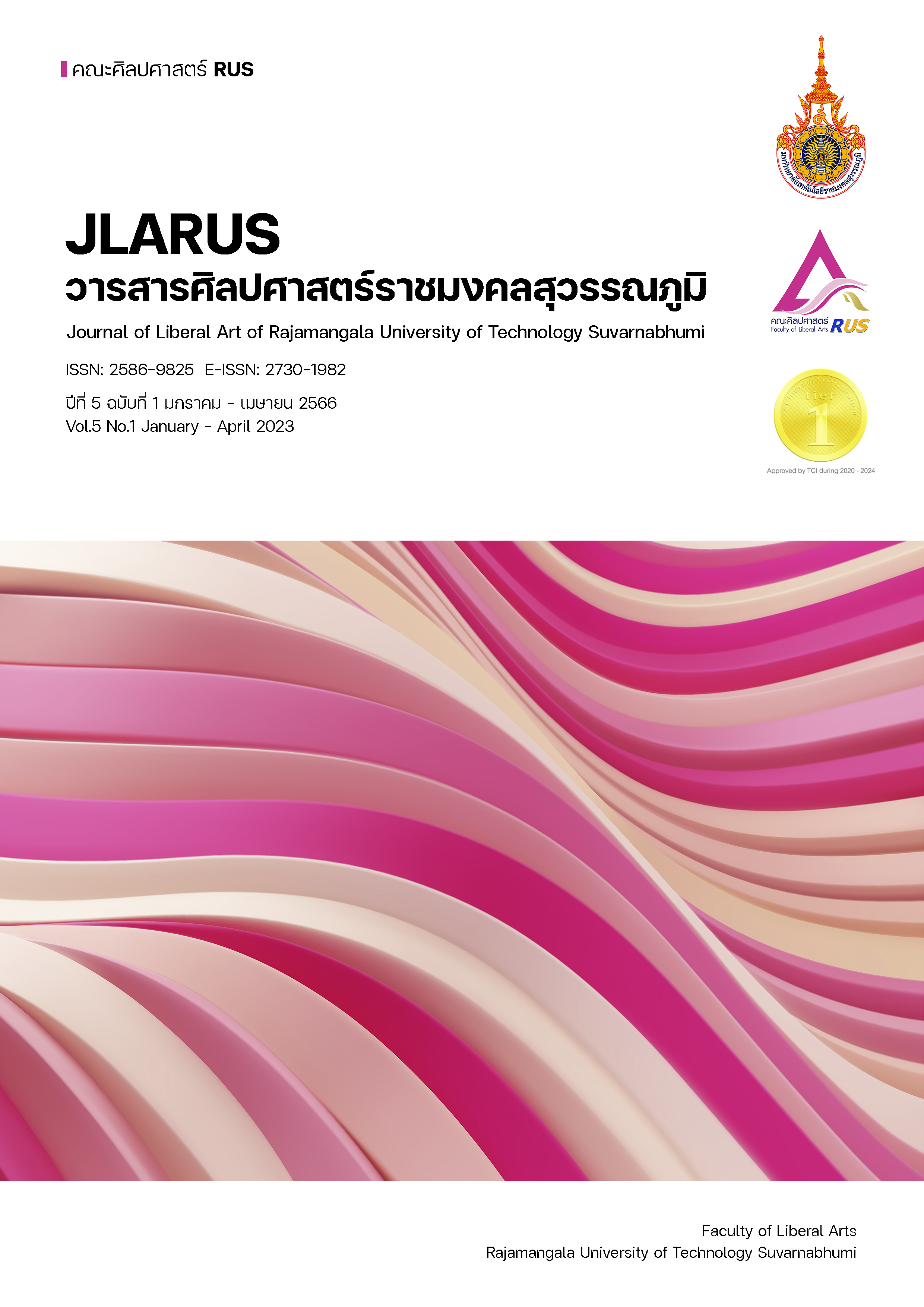HOW TO POLITICAL ELECTION AND COMMUNICATION FOR VOTES
Main Article Content
Abstract
Political fervor near the election of representatives causes every political party finds different strategies for election campaigns since designing the finesse of persuading voters, or those who influence voters' vote, to choose to vote for their candidates and political parties by using political communications. Such political communications are used to communicate with the people who have the right to vote in all forms, including face-to-face talk, addressing large groups of people, the use of television, radio, billboards, pamphlets, online media by using information, news, problems and needs of the people obtained from public opinion and other resources to form the policy of the party as well as creating the image of candidates and their political parties by using political marketing in order to get votes to win the competitors. In this article, a communication style that uses empathy with four key elements, namely trust, truth, respect and respect, body language, is proposed for political parties to use as a tool to increase efficiency in communicating with the people who have the right to vote in order to design an election campaign appropriately in the current era where people want the truth. Confidence in policies announced by political parties, candidate integrity, the ability to be a communicator who uses body language to communicate and respect for others are the important weapons that political parties should consider in order to win votes against their opponents as they have set goals without forgetting the introduction of rapidly evolving communication technologies to create political power as well.
Article Details

This work is licensed under a Creative Commons Attribution-NonCommercial-NoDerivatives 4.0 International License.
References
กิรพัฒน์ เขียนทองกุล. (2022). มติมหาชน: แนวคิดและปัญหาการเป็นเครื่องมือทางการเมืองของผู้นำฝูงชนทางการเมืองในการปกครองระบอบประชาธิปไตย. วารสารอินทนิลทักษิณสารมหาวิทยาลัยทักษิณ, 16(2), 9-23.
กรุงเทพธุรกิจ. (2562). โพลชี้นายกฯมีภาพลักษณ์ผู้มีบารมี กล้าคิด กล้าทำ มือสะอาด ไม่ด่างพร้อย. สืบค้น 26 ธันวาคม 2565. จาก https://www.bangkokbiznews.com/politics/855726.
นันทนา นันทวโรภาส. (2558). สื่อสารการเมือง ทฤษฎี และการประยุกต์ใช้. กรุงเทพมหานคร: สำนักพิมพ์แมสมีเดีย.
บุณฑริกา เจี่ยงเพ็ชร์. (2543). พฤติกรรมการสื่อสารทางการเมืองผ่านสื่อมวลชน สื่อบุคคล สื่ออินเทอร์เน็ต และทัศนคติทางการเมืองแบบประชาธิปไตยที่มีต่อความรู้ ทัศนคติ และกิจกรรมการมีส่วนร่วมทางการเมืองที่เกี่ยวกับการเลือกตั้งระบบใหม่ของกลุ่มผู้ใช้อินเทอร์เน็ตในกรุงเทพมหานคร. (วิทยานิพนธ์วารสารศาสตรมหาบัณฑิต). กรุงเทพมหานคร: มหาวิทยาลัยธรรมศาสตร์.
บูฆอรี ยีหมะ. (2554). ความรู้เบื้องต้นทางรัฐศาสตร์. กรุงเทพมหานคร: จุฬาลงกรณ์มหาวิทยาลัย.
พระมหาธนาศิลป์ ธมฺมานุสารี, สุรพล สุยะพรหม และเติมศักดิ์ ทองอินทร์. (2566). เปรียบเทียบการสื่อสารทางการเมืองของ ดร.ทักษิณ ชินวัตร และ พลเอกประยุทธ์ จันทร์โอชา. วารสาร มจร สังคมศาสตร์ปริทรรศน์, 12(1), R94-108.
ยุทธพร อิสรชัย. (2561). แนวคิดการสื่อสารทางการเมือง. ในประมวลสาระชุดวิชาการวิเคราะห์การเมือง. นนทบุรี: สำนักพิมพ์มหาวิทยาลัยสุโขทัยธรรมาธิราช.
สุรพงษ์ โสธนะเสถียร. (2545). การสื่อสารกับการเมือง. กรุงเทพมหานคร: ประสิทธิ์ภัณฑ์แอนด์พริ้นติ้ง.
สำนักกฎหมาย สำนักงานเลขาธิการวุฒิสภา. รวมกฎหมายประจำปี 2560 เล่ม 1 หมวดอักษร ก (รัฐธรรมนูญแห่งราชอาณาจักรไทย พระราชบัญญัติประกอบรัฐธรรมนูญและพระราชบัญญัติ). สืบค้น 25 ธันวาคม 2565. จากhttps://www.senate.go.th/assets/portals/93/fileups/257/files/ ttlaw%201_60.pdf.
สำนักกฎหมาย สำนักงานเลขาธิการวุฒิสภา. รวมกฎหมายประจำปี 2561 รวมพระราชบัญญัติประกอบรัฐธรรมนูญ. สืบค้น 25 ธันวาคม 2565. จาก https://www.senate.go.th/assets/portals/93/รวมกฎหมายประจำปี/257/TH-TH.
ราชบัณฑิตยสถาน. (2554). พจนานุกรมฉบับราชบัณฑิตยสถาน พ.ศ. 2554. กรุงเทพมหานคร: นานมีบุ๊คส์ พับลิเคชั่นส์.
อรอนงค์ สวัสดิ์บุรี. (2555). พฤติกรรมการสื่อสารในองค์กร. กรุงเทพมหานคร: สำนักพิมพ์แห่งจุฬาลงกรณ์มหาวิทยาลัย.
Stahl, A. (2018). The Secret To Successful Communication. สืบค้น 27 ธันวาคม 2565. จาก https://www.forbes.com/sites/ashleystahl/2018/07/27/the-secret-to-successful-communication/?sh=1c501bd62df0.
McNair, B. (2003). An Introduction to Political Communication. London: Routledge.
Ranney, A. (1993). Governming: An introduction to political science. (6th ed.). New Jersey: Prentice Hall International.
Yorke, C. (2017). The significance and limitations of empathy in strategic communications. Defence Strategic Communications, 2(2), 137-160.


